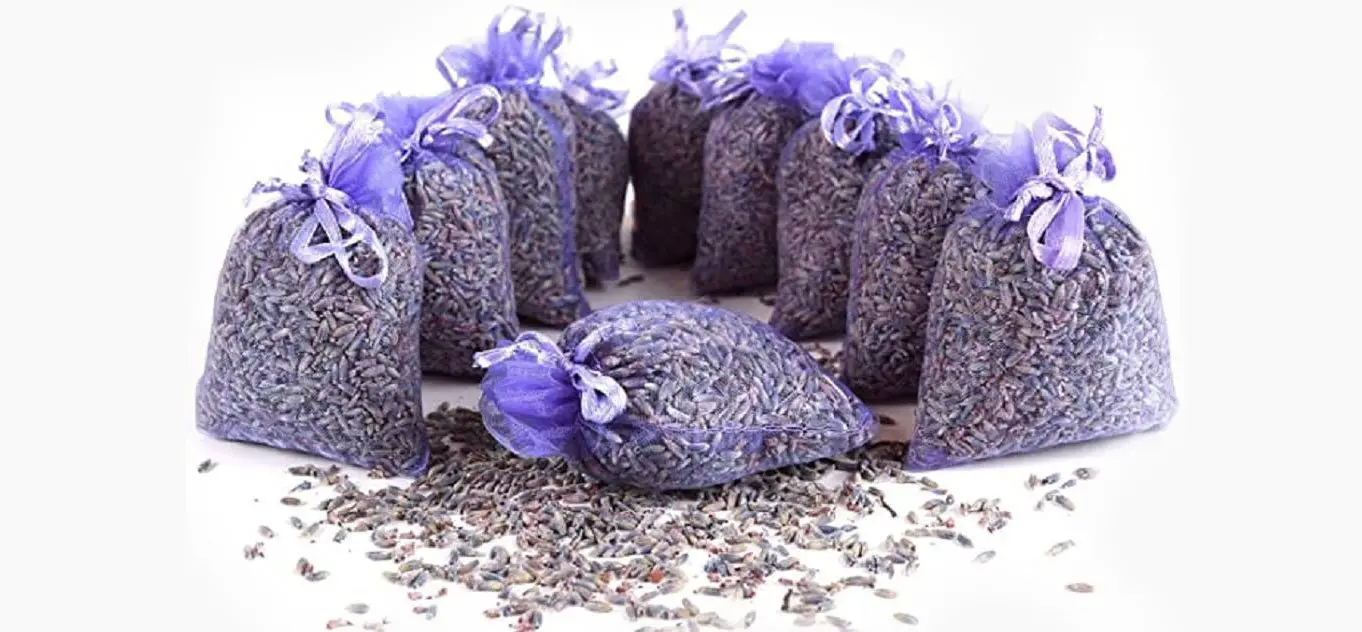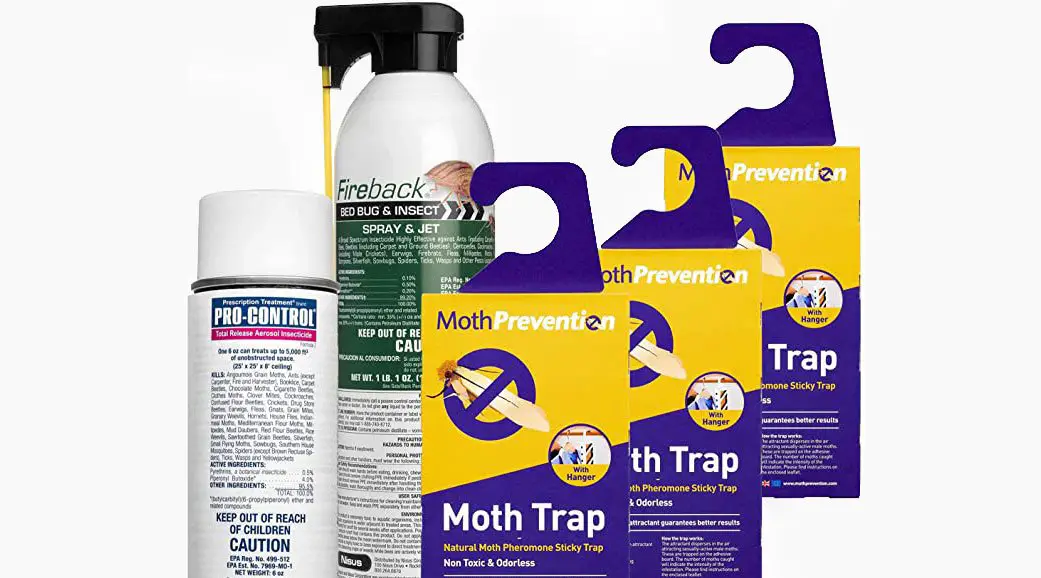Do moths eat cotton? Unfortunately, this is not really a simple yes or no answer. Moths only eat fabrics that are made from or contain keratin. Naturally, cotton is a plant-based protein and as such is not usually on the menu unless it has been blended with some sort of wool.
Moths, those annoying flying insects that can plague our homes, are not actually the ones that eat our clothes. This is partly because moths do not eat cotton, But, it is also because most adult moths do not have mouths. I know right, no mouths, what a joke. Anyway, it’s actually their slimy little offspring that are the main culprits for those annoying holes in your favourite cashmere jumper. In some cases, the adult moth may use your cotton clothing as a substitute to lay their eggs. If the cotton clothes where the adult moth’s eggs are deposited contain some sort of animal fiber, the moth larvae will end up eating the cotton along with the animal fibers. However, if there does not seem to be any animal fiber in the cotton cloth, then the moth larvae will not eat your cotton fabrics, but this is only if the garment is 100 percent cotton, which is pure vegetable fiber.[/vc_column_text]
Html code here! Replace this with any non empty text and that's it.
The clothes moth larvae feed on keratin, a structural protein produced only by animals. The larvae will feed constantly for throughout this life stage. The duration of this stage can often be quite varied. It is typically affected by the humidity, the temperature, the available foods and the environment in general. This clothes munching stage can last from a little more than a month to up to two years, better hope that carpet isn’t a wool blend. Once the larvae start to exceed a centimeter in length, they prepare for their next stage and make their cocoon.
In the cocoon, they will begin their metamorphosis into adult moths. Once completed they will emerge for their first flight, 8 millimeters in length, with golden-brown wings. In this final form, they will live about three months. This will depend quite a lot on the general environment of the moth, similarly to when they were in the larvae stage. They are difficult to spot predominantly because they do not tend to fly in the hours of light, they really seem to prefer the cover of darkness. Every adult female will lay at least 50-100 eggs, which will take anywhere between five and ten days to be hatch in the summer months and about one month in the colder winter months.
Types of moths that eat clothes
No moth whether they are in their adult or larval stage will eat cotton. However, it is widely understood that most of them will lay their eggs on a variety of different types of fabrics. Depending on what type of fabric the eggs are laid it will depend on whether the garment will be simply a refuge or if it will also be the first snack for the recently hatched moth larvae. As previously mentioned, their clothing of choice will be made of or contain animal based protein called keratin. Those slippery moths’ larvae can’t get enough of the stuff.
The Tissue Bisselliella, perhaps most commonly known as the clothing moth, is the most recognized bringer of destruction with regards to your prized clothing items. These moths are 1 to 2 inches (2 to 5 centimeters) in length and light brown. Unlike most moths, they do not like light and often hide in closets, without being detected until your favourite jumper looks like it’s been out hunting with Owen Wilson. The clothes moth larvae are easy to identify since they are bright white with a darker head, oh that and you are literally watching them eat your clothes. Ringworm Pellionella, or the box moth, is quite similar to the previous clothing moth. Like his relative, this type of moth does not like light and is rarely seen unless it is disturbed. The moth larvae, in this case, are difficult to identify. When one of them is disturbed, it will withdraw into a sort of cocoon type thing that it makes from the threads of your garment. This makes them quite a bit harder to spot. If you’re unsure just wash your clothes in the washing machine and leave them to dry in the sun. This will kill any larvae or eggs that might be lurking.
View this post on Instagram
Do moths eat cotton clothes?
Most larvae feed only on animal fibers such as wool, silk, cashmere, angora or any fabric that offers some animal protein. Cotton is not a desired snack for moths because it is a vegetable fiber. Moths sometimes use cotton fibers to cover or protect themselves when they have nothing else to use. However, the moths mentioned above feed on cotton clothing only if the garment has some mixture in its composition that includes animal fiber, this means that the cotton garment could not be 100% cotton for a moth larvae to cause it any damage.
What kind of clothing do moths eat?
As mentioned above, what makes moths eat clothes is the animal protein keratin that is contained within them. Thus, the only clothes that moths will eat are those that are made with keratin-based fabrics. Among the most common fabrics that moth larvae will eat are silk, furs and wool.
What do moths eat?
Moths are nocturnal insects; adult moths will usually eat animal-based products. Moths also will feed on silk, fur, leather, wool and silk clothing. Although most moths do not eat anything due to the fact that they have no mouths, they survive on the food they store during hibernation and from the energy created in the larval stage.
Some species of moths drink nectar, while others prefer a fermented set of macerated fruits or excrements from birds or other animals. Several types of moths and other similar insects also consume water from mud puddles to assimilate some nutrients. In natural environments, moths tend to feed in shallow water, usually in rain wells.
How Do You Prevent Moths and Their Larvae from Invading Your Closet?
To prevent moth larvae from ruining your clothes and carpets you should keep your clothes clean and hairless, as larvae prefer unwashed clothes because they contain traces of sweat, food stains and hairs. For this reason, when they attack furniture, such as chairs or sofas, they usually start eating in the area where we sit.
It is advisable to avoid exposure to moth repellents.
Plant repellents, such as camphor (a waxy substance from the camphor tree) or dry lavender placed between clothes in small cloth bags, are traditionally used to repel these nocturnal butterflies.
Today there are also industrial antifungal agents, which contain an insecticide that attacks the larvae or prevents the development of the eggs. It is usually presented in the form of balls or boxes that are hung from the bar in the wardrobe. This way it can be in contact with the air, and it’s transformed into gas. This gives off such a strong and distinct smell. Side note: It’s also not good for you to be smelling it that much either.
How To Eliminate Moths?
Sometimes you are faced with no other option, they have to go, it’s time to eliminate those moths once and for all. If you don’t jump on it like a grenade it will quickly blow up into a much bigger problem, wait till you see what they can do to your carpets.
Keeping It Clean
The larvae can be found in house carpets as well, so it is necessary to clean them regularly. It is also important to keep spaces clean, such as under the bed, baseboards and any hidden spaces in rooms. Keep your closet doors closed so that any flying moths can’t get in and ruin your clothes.
Getting Rid Of Moths
Keeping the house clean is a good way to scare away any pesky clothes eating moths; you could also look at removing any items such as carpets that attract all sorts of disgusting insects and pests.
This reduces the amount of space available where these insects can hide, whilst also at the same time keeping your house clean, but most importantly it’s going to help to keep all your clothes moth free. Generally, the cleaner and tidier everything Is the harder it will be for you to get a full on moth infestation.
Inserting Mosquito Nets
If you live in a rural or maybe a heavily vegetated area, moths may be more frequent. Therefore, it is an excellent option to place mosquito nets on your windows so that these adult moths as well as any other insects cannot enter your room and deposit any eggs while they’re in there.
This way, you will still be able to open your windows to let in the fresh air without having to worry about a torrent of fluttering little rug munchers making a beeline for your incandescent light bulb.
Alternatively, There’s Poison
Until a few years ago, naphthalene was used, a neurotoxin that affects the central nervous system of these insects and kills them. Then it fell into disuse due to its toxicity and paradichlorobenzene and pyrethroids were used. In any case, it is important to follow the manufacturer’s instructions and avoid continuous and excessive exposure to vapors.
Well hopefully now you know that moths do not eat cotton, or anything really for that matter, its only their larvae that consume anything and their weapon of choice is anything containing keratin. Remember when it comes to pest control prevention is always the best defense against any insect infestation.
















